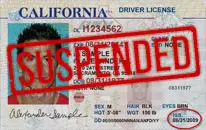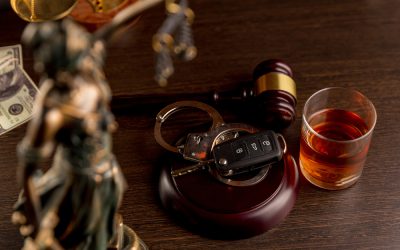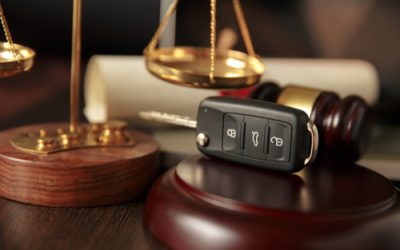California Vehicle Code Section 20002(a): Hit and Run Involving Property damage makes it a misdemeanor for an individual to flee the scene of an accident. One can face jail time, costly fines, or both if convicted.
Furthermore, hit-and-run convictions result in points on your driving record and could even lead to a license suspension. A Los Angeles DUI lawyer can provide more information about VC 20002(a) charges, the elements of the offense, defenses, and possible penalties.
You can learn more when you call or complete our online contact form.
When Can Drivers Face VC 20002(a) Charges?
The police may charge a driver with a misdemeanor hit-and-run if they cause an accident resulting in property damage or bodily injury to another person and fail to stop, provide identification, and render aid. The legal system describes these requirements in California Vehicle Code 20002(a).
What Are the Elements of a California Misdemeanor Hit and Run?
To convict an individual for Vehicle Code 20002(a), the prosecutor must prove several elements beyond a reasonable doubt. These elements include:
- First, the defendant was operating a motor vehicle.
- Second, the defendant’s vehicle was involved in an accident resulting in property damage or bodily injury to another person.
- Third, the defendant knew or, through reasonable care, should have known that their vehicle was involved in a collision.
- Finally, the defendant intentionally failed to stop at the scene, provide personal identification, and render reasonable assistance as required by California law.
Without proof, a skilled criminal defense attorney can argue for dismissing misdemeanor hit-and-run charges. There are often avenues to dispute involvement, knowledge, or intent elements.
An experienced lawyer thoroughly investigates the alleged incident and advocates strongly on the defendant’s behalf after any motor vehicle accident.
What Are the Penalties for a Misdemeanor Hit-and-Run Conviction in California?
The penalties for misdemeanor hit-and-run include up to six months in county jail, fines up to $1,000, driver’s license suspension, restitution to victims, and probation, including community service.
Remember, drivers who cause a hit-and-run accident can face charges for a misdemeanor crime.
Does a VC 20002(a) Charge Go on Your Criminal Record?
A misdemeanor conviction under VC 20002(a) creates an adult criminal record. However, in some cases, courts grant deferred entry of judgment or reduced pleas for infractions, avoiding formal misdemeanor records.
An attorney specializing in misdemeanor criminal defense can assist you in avoiding a criminal history.
Can a Hit-and-Run Become a Felony?
Hit-and-run accidents can result in a felony charge if the accident causes permanent, severe injury or death to any person. Felony convictions can lead to multi-year prison sentences, so discussing your legal options is essential if you face these charges.
You can learn more about charges under California VC 20001(a): Felony Hit and Run Involving Injury or Death with a criminal defense lawyer.
Can Undocumented Drivers Face Hit-and-Run Charges in California?
Immigration status has no bearing under VC 20002(a) for misdemeanor hit-and-run collisions. Undocumented immigrants are subject to misdemeanor or felony prosecution for hit-and-run just as citizens are.
Are Private Property Accidents Subject to California’s Hit-and-Run Laws?
No, VC 20002 charges only apply to collisions occurring on highways and public streets. However, broader hit-and-run laws can cover DUI and vehicular manslaughter accidents on private property.
How to Handle a VC 20002(a) Charge
If you or someone you know was in a vehicle accident and is facing a criminal charge for a hit-and-run, consider the help of a criminal defense lawyer.
A misdemeanor offense comes with repercussions, but you still have defense strategies to help your case, even if the police accuse you of driving impaired at the time of the hit-and-run. A lawyer can also help you with DUI hit-and-run charges in California.
An experienced California criminal defense attorney can dispute your involvement, raise reasonable doubt, negotiate reduced charges, and advocate for the best resolution. Early legal guidance is critical to limiting penalties.
Defenses for CA Vehicle Code 20002 (a) Misdemeanor Charge
Depending on the details of your case, there are defenses against hit-and-run charges that may work. The most common defense is that you didn’t know you were involved in an accident.
For example, you may have heard a noise while driving, but when you looked back in the mirror, you didn’t see that you had swiped a parked car. Or, you backed into a fence and damaged it while pulling out but never saw the damage.
However, If you knew you had caused an accident, you had a duty to pull over. Other possible defenses include:
- You weren’t the one driving the car.
- You knew you caused a collision but thought there was no damage.
A good DUI lawyer can help you choose the right method to build your defense.
Will Insurance Cover a Misdemeanor Hit-and-Run Accident in California?
Generally, auto insurance policies do not exclude coverage for accidents resulting from illegal acts like hit-and-runs. However, an experienced lawyer may overcome claim denial through advocacy.
Can I Leave a Minor Accident Scene to Avoid Citations?
We recommend that you never leave an accident scene. The criminal penalties, civil liability, license suspension, and insurance impacts of a hit-and-run vastly outweigh ordinary traffic citations. Always stop, exchange information, and contact the police.
Learn More About VC 20002(a): Property Damage Hit-and-Run
You can learn more about California Vehicle Code 20002(a) and charges for a hit-and-run involving property damage when you call or fill out our online contact form. We can help you learn more about any accident with property damage and your hit-and-run case.






